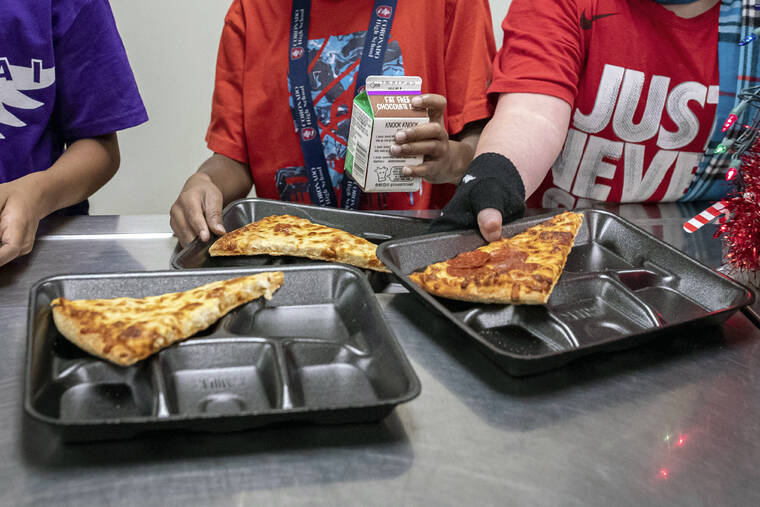
WASHINGTON >> Millions of additional students in schools serving low-income communities will be eligible to receive breakfast and lunch at no cost under a rule change announced today by the U.S. Department of Agriculture.
At schools where 25% of families participate in income-based public benefits, such as the Supplemental Nutritional Assistance Program, the federal government now will cover the cost of free meals for all enrolled students. Previously, the qualifying threshold was 40%.
Roughly 3,000 additional school districts serving more than 5 million students will now be eligible, officials said.
“While there is still more work ahead to ensure every K-12 student in the nation can access healthy school meals at no cost, this is a significant step on the pathway toward that goal,” said Stacy Dean, USDA deputy under secretary for Food, Nutrition, and Consumer Services.
During the pandemic, Congress temporarily made universal meals free to all students, but that ended last year. Other federal programs that provided direct food assistance to families also scaled down amid soaring food prices, putting strains on family budgets and leaving some kids hungry.
Meantime, eight states — California, Colorado, Maine, Massachusetts, Michigan, Minnesota, New Mexico and Vermont — have made school meals free to all students regardless of income.
The new rule will expand access to universal meals through a program known as the Community Eligibility Provision, or CEP. Instead of requiring families to fill out individual applications for free or reduced-price meals, schools participating in the program receive federal funding based on income data, with local or state money filling in any gaps in the cost of offering meals to all students. Advocates say reducing administrative burdens like applications helps ensure children don’t go hungry.
Some have criticized the costs of the program. The Republican Study Committee has called for eliminating the CEP altogether, arguing it ignores the individual income eligibility of each student.
Nationally, expanding a community-based model of universal meals would alleviate burdens on many families, said Anna Korsen, policy and program director at Full Plates Full Potential, a nonprofit organization in Maine that works on maximizing access to school meals.
“The federal poverty guidelines that dictate who gets a free meal and who doesn’t are really outdated,” Korsen said. “There are so many families that on paper don’t qualify for a free meal, and they can get lumped into this group of … families that can afford to pay for lunch or breakfast at school. But really, those families are living paycheck to paycheck.”
Agriculture secretary Tom Vilsack said the rule change is a step toward fulfilling the promise of healthy school meals for all.
“Increasing access to free, healthy school breakfast and lunch will decrease childhood hunger, improve child health and student readiness, and put our nation on the path to better nutrition and wellness,” he said.
Read More: World News | Entertainment News | Celeb News
Star Ads






